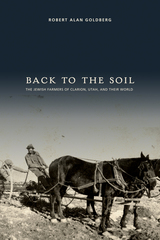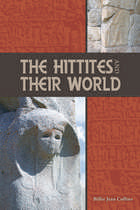
The image of the Jew solely as urbanite may stem from the period of 1880 to 1920, when two million Jews left their homes in Eastern Europe and established themselves in the urban centers of America. Lesser known are the agrarian efforts of Jewish immigrants. In Back to the Soil, Robert Goldberg focuses on the attempt of one such Jewish colony in Clarion, Utah. In 1911, eighty-one families left eastern cities to farm the Clarion tract. Jewish families funded the venture, the governor of Utah en-couraged it, and the Mormon Church financially aided the community. Despite these efforts, Clarion died as an organizational entity in 1916, with the dozen remaining families departing by the mid-1920s.
Goldberg sheds light on the values and ideals of the colonists, the daily rhythm of life, the personalities of the settlers, and the struggle for and eventual collapse of their dream. Of all the attempts to establish a Jewish colony on the land, Clarion was the largest and had the longest existence of any colony west of the Appalachians. The Clarion fragment, lost and forgotten, thus becomes a crucial part of the larger mosaic of Jewish history in the West.
Release of this new paperback edition is timed to coincide with the celebration of the centennial of the founding of the Clarion colony.


The 1970s were tumultuous years in American prisons, beginning with the bloody uprising at Attica and ending with the even bloodier one at New Mexico State. The Massachusetts prison system was one of the most seriously afflicted. Murders, suicides, riots, strikes, and mass escapes were only the most obvious manifestations of a system in turmoil. Attempts at reform foundered badly there, in part because of strong opposition from prison "guards" or
officers. Kelsey Kauffman's unsparing account of life "on the inside" during that troubled time takes the usually neglected perspective of prison officers. The setting is primarily the maximum-security institution, Walpole; the voices are those of men who felt as trapped as the inmates they guarded.
Prison officers have a subculture and "code" of behavior as binding as that of inmates. As Kauffman quickly makes clear, what recruits learned from their fellow officers—and inmates—was far more important in how they adjusted to the harsh prison environment than was the inadequate instruction they received from the Department of Correction. She describes in detail the role of officers in the everyday life of the prison, their relationship to a seemingly uncaring prison administration, their power struggles with inmates, their methods for coping with inmate violence, and the consequences of their own resort to violence against inmates.
Through the pain filled words of the officers themselves, she chronicles the devastating effect that working in prison had on them and their families. Prison officers, Kauffman argues, are a badly misunderstood and often maligned group. Failure to appreciate their problems and perspectives has inevitably undermined attempts to reform prisons and contributed to the general misery of those who live and work behind prison walls. Although the events that Kauffman discusses helong to a particularly violent time and place, the underlying problems do not. In varying intensity they characterize most prisons most of the time.
READERS
Browse our collection.
PUBLISHERS
See BiblioVault's publisher services.
STUDENT SERVICES
Files for college accessibility offices.
UChicago Accessibility Resources
home | accessibility | search | about | contact us
BiblioVault ® 2001 - 2024
The University of Chicago Press









